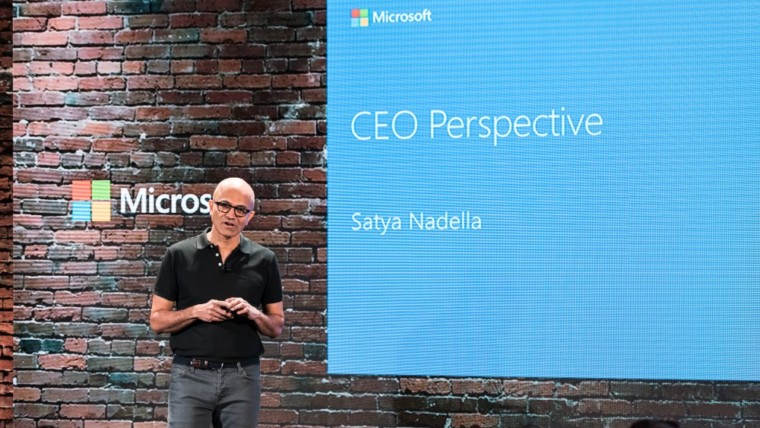This guest post written by Mollie West.
To find out companies are engaging with their employees’ career progression, we spoke with Judit Schneider, a member of Spotify’s Learning and Development team (otherwise known as the Greenhouse team), and other flat organizations anonymously. We also delved into insights about Google from Work Rules! by Laszlo Bock, Google’s head of People Operations, ultimately finding five key insights.
The Five Principles of Career Development
1. Focus on purpose, benefits, and balance, not titles.
Whether you’re hiring new people or working with longstanding employees, giving them the chance to work on work that matters counts for a lot: one study found that almost half of the workforce would “take a 15% paycut to work for an organization with an inspiring purpose.” At Spotify, people who join are motivated about the mission of doing something that has never been done before: providing music everywhere for everyone. And in fact, some people have taken pay cuts to be a part of the mission. (But as Schneider says, “You have to pay fairly. It’s treated as a hygiene factor. It should be off the table so that it doesn’t distract.”)
Purpose and impact is also essential at Google, and employees care less about their title or level within the company. Many people stay at Google because they are motivated by the mission, security, perks, compensation, and family benefits. Bock writes that Google’s mission “gives individuals’ work meaning, because it is a moral rather than a business goal.”
Another company we spoke to said that creating levels and titles was less important than creating a clear path for how people grow. They have around 100 employees, but no official titles. And while they do have an organizational chart, it’s not made public—they feel outsiders shouldn’t change how they interact with an employee, based solely on the employee’s level within the organization.
2. Use new challenges, not promotions, as motivation.
The most talented people on the planet want an aspiration that is also inspiring. The challenge for leaders is to craft such a goal.
—Lazslo Bock, Google
Across all companies, employees spoke about how they valued the opportunity to change roles to find new challenges. At Google, employees have the freedom to start new side projects, change the scope of a role, or move into a new role. Google also specifically hires candidates with what Bock calls “cognitive ability,” since many of Google’s roles require the ability to constantly adapt. As Bock writes, “We want smart people who can learn and adapt to new situations.”
Spotify, meanwhile, believes in the 70:20:10 principle: 70 percent of learning should come from on-the-job experience, 20 percent through social learning with colleagues, and only 10 percent through formal learning, such as classroom training or online courses. This translates into supporting the on-the-job learning through both internal and external coaching, as well as mentoring programs. Rapid growth also means roles change quickly: according to Schneider, “We recruited a recruiter, and then six months later, she was the recruiting manager.”
At other flat companies, they stressed the importance of giving people the opportunity to do the work they want to do, regardless of their official role within the organization. For example, a person could join the engineering team and come in as a mobile expert, but then work on the code base, or move into an entirely different department. This practice had encouraged people to stay, rather than hopping to other startups.
3. Support internal mobility.
Don’t just allow people to change roles, actively encourage it. Google has an entire team devoted to internal mobility. Google’s famous 20 percent time can be used to explore new projects or roles, which can then help an employee transition into a new role. Bock writes that “the idea of 20 percent time is more important than the reality of it. It operates somewhat outside the lines of formal management oversight, and always will, because the most talented and creative people can’t be forced to work.” The point is that Google doesn’t restrict its employees to work on certain projects.
Companies also promote opportunities: both Spotify and Google have internal job sites, and Spotify’s chapter leads often email their entire department or the entire company about internal opportunities. Schneider says that “Sometimes people have a clear idea of what they want to do, but they need to talk to people in those roles,” so Spotify supports that exploration.
4. Create time for regular feedback.
If the communication isn’t happening, feedback isn’t happening. Spotify’s work pace is incredibly fast, and if an employee doesn’t adjust his behavior as soon as he does something wrong, he won’t grow and develop.
– Judit Schneider, Spotify
Employees aren’t just given new challenges; they’re also given feedback in ways to improve. One of the core pieces of Spotify’s performance development approach is supporting continual dialogue between employees and managers. Spotify supports this feedback through four pillars:
- Pillar 1 is continuous, one-on-one discussions between managers and employees that occur every week or bi-weekly. The Greenhouse team provides a suggestion of topics, so that every meeting doesn’t default into just talking about operations. Some weeks, managers need to touch on long-term development planning.
- Pillar 2 is development talks. Twice a year, employees and managers step back to evaluate their work. Employees collect 360-feedback beforehand on achievements (what’s your added value), behaviors (how are you exemplifying Spotify’s values), and mastery (based on Dan Pink’s book “Drive”). Spotify has developed its own visual tool to support this discussion: an accelerometer. It lets employees show whether they are feeling over or underchallenged.
- Pillar 3 is a talent snapshot, which is Spotify’s version of talent calibration. For every person in the office, Spotify asks, are they performing at their highest potential? This ensures that everyone gets the right development opportunities with projects going forward.
- Pillar 4 is compensation. This should reflect all the other pillars.
5. Provide mentorship to encourage growth.
Don’t just stop at performance reviews: one of Google’s more unique offerings for career development is its “Career Gurus” program, which offers coaching to anyone seeking career advice. The program was not conceived or managed by People Ops, but rather, grew out an organic need from the engineering team. And that’s exactly what makes it so successful in a flat organization: it’s not seen as part of “HR” or a top down mandate. As Laszlo Bock writes, a Googler named Becky Cotton was part of the online payments team, and then she became the company’s first career guru. “Becky just decided to do it. She started by announcing in an email that she would hold office hours… and over time demand grew and others volunteered to join.” By 2013, more than 1000 employees had signed up to have hour-long chats.
A publishing company we spoke with explained that they have separate roles for managers and coaches. In other words, as an employee, you’ll have someone who manages your day-to-day work, and someone who coaches you. You’ll also have a group lead, who in addition to mentoring and coaching you, can help you find new roles in the company. Separating out these roles benefits the employee, since each aspect of his or her development is supported individually by different people.
It’s Not You, It’s Me
Organizations can make great efforts to support an employee’s growth, but inevitably, some employees will still leave in search of a place where they can have a greater direct impact. As Schneider points out, “Four years ago we were 400 people. Now we are 1800. People joined a company that had a startup feeling and now say, oh wow, I’m part of a big company.” Many Googlers also like to be in roles that have a big scope, but due to Google’s size, some employees feel like they no longer have the impact they used to. Google actually tries to predict who might be at risk for leaving so the company can provide extra to support to that employee. Bock writes that in the Googlegeist (Google’s annual employee survey) “we have five questions that predict whether employees are likely to quit. If a team’s responses to those five questions fall below 70 percent favorable, we know more people will leave during the following year unless we intervene.” The People Ops teams tries to identify the issues to intervene on. But ultimately, Google understands that some attrition is natural as it grows.
When employees choose to leave a flat organization to find in a role with greater scope or impact, it’s best to support their decision. This is a natural progression of some employees’ careers. We recommend creating ways to stay in touch with former employees, including building alumni networks, advisory boards, or alumni consulting roles.








The Evolutionary Edge
Every Link Ever from Our Newsletter
Why Self-Organizing is So Hard
Welcome to the Era of the Empowered Employee
The Power of “What If?” and “Why Not?”
An Adaptive Approach to the Strategic Planning Process
Why Culture/Market Fit Is More Important than Product/Market Fit
Group Decision Making Model: How to Make Better Decisions as a Team